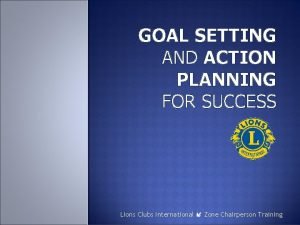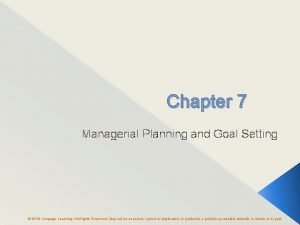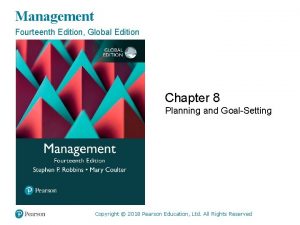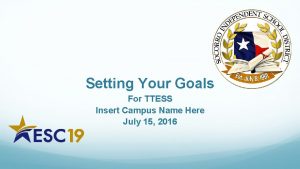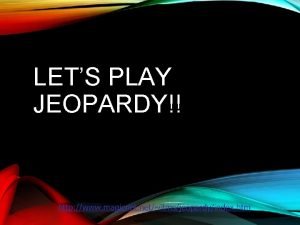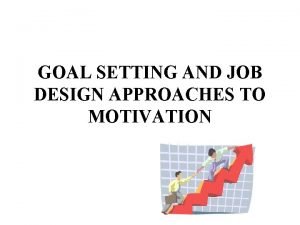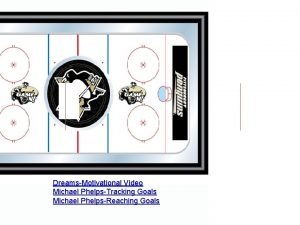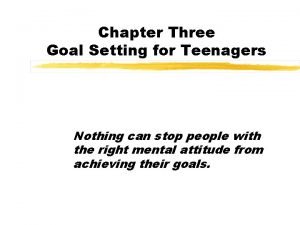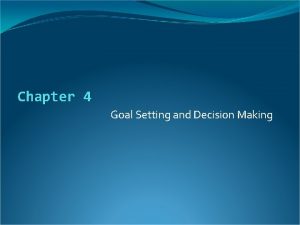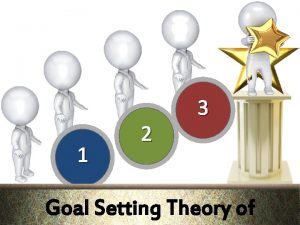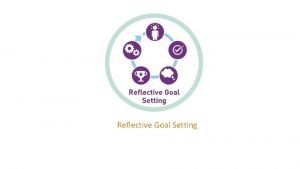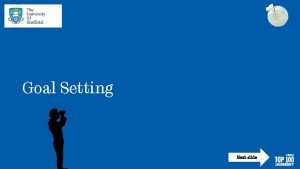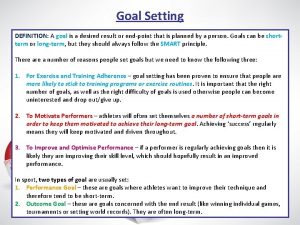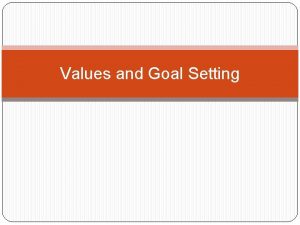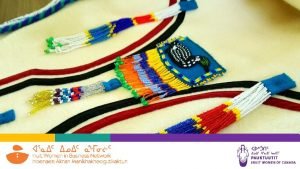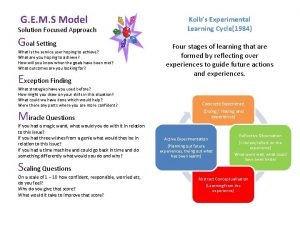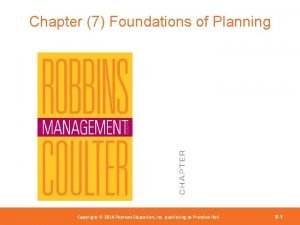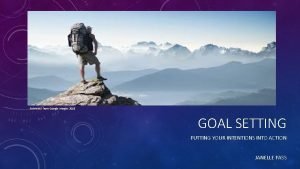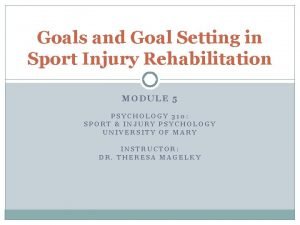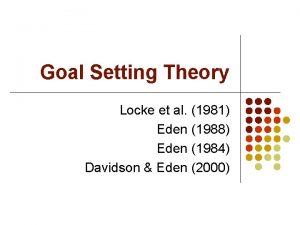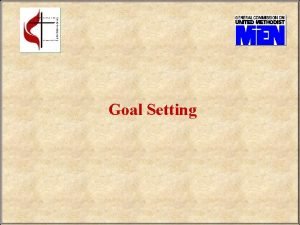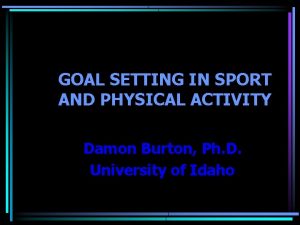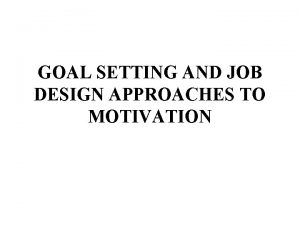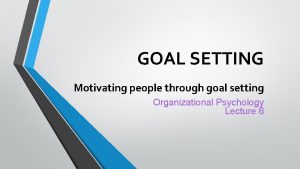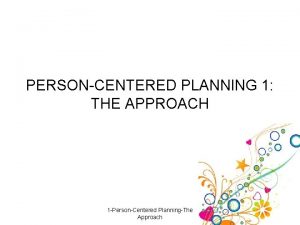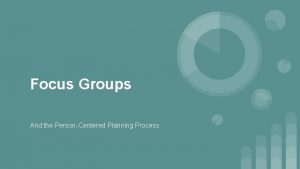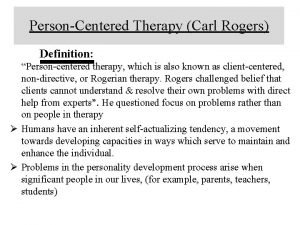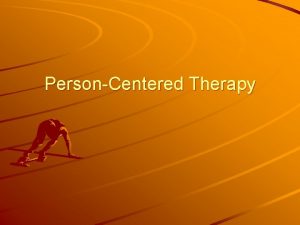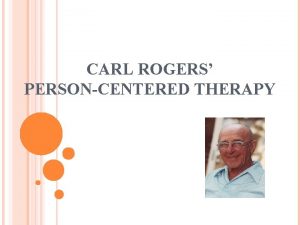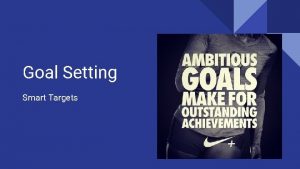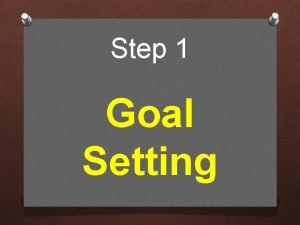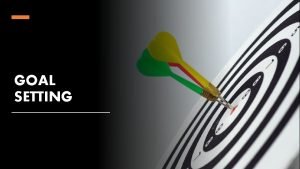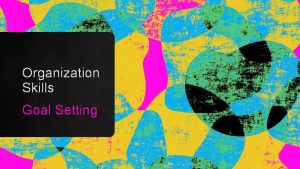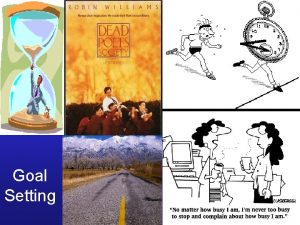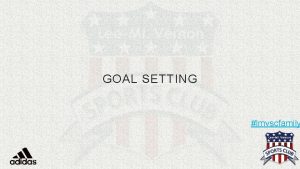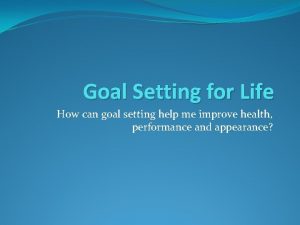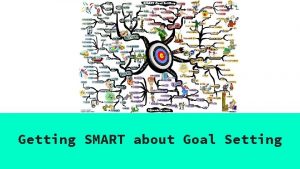GOAL SETTING ACTION PLANNING THROUGH A PERSONCENTERED PLANNING





































- Slides: 37

GOAL SETTING & ACTION PLANNING THROUGH A PERSON-CENTERED PLANNING LENS Delaware Positive Behavior Support Project Content based on materials from Inclusion Press. www. delawarepbs. org

OUR GOALS: Gain understanding of Person-Centered Planning (PCP) See how PCP philosophy & concepts apply within MTSS framework Have fun with strategies and tools to use at a Tier 3, Tier 2 or Tier 1 level of support

WHAT ARE YOUR STRENGTHS, GIFTS, TALENTS?

PERSON-CENTERED PLANNING. . . is a set of values and strategies that can be used to assist an individual in creating a vision for the future and a plan for working with others toward realizing that vision. Impact, 1998

PERSON-CENTERED PLANNING. . . allows for collaboration of the people who truly care for the individual. . begins and ends with positive attitudes of everyone involved. Impact, 1998

PERSON-CENTERED PLANNING. . . is a use of planning strategies that focus on people rather than on services or programs, driven by individual’s unique visions, preferences, likes, and dislikes. Impact, 1998

PERSON-CENTERED PLANNING. . . is a perspective that sees people’s capacities, building on the strengths, gifts, and abilities of individuals and their circles of support. Impact, 1998

PERSON-CENTERED PLANNING. . . is a process that is respectful, begins/ends with positive attitudes, and fosters/requires commitment.

PERSON-CENTERED PLANNING Collaborative Effort Commitment Support Action Impact, 1998

THIS SOUNDS GREAT, BUT HOW & WHEN SHOULD ONE USE PERSONCENTERED PLANNING?

POSITIVE BEHAVIOR SUPPORT School-wide/Universal School-Wide Data Collection and Analyses School-Wide Prevention Systems (rules, routines, arrangements) m Individual rv ss Interviews, Questionnaires, etc. Observation s and ABC Analysis Group Interventio ns t en In te se en As Analyze Student Data tio n Targeted Individualized Student Interventions and Support Plans Person-Centered Plans Adapted from George Sugai, 1996

MAPS – MAKING ACTION PLANS


re o m n r a ce e l ’s racti t e L p & ether tog

MAP – HISTORY/STORY Gives the “map maker” or focus person and his/her family, friends, and others a chance to discuss the life of the person so far. Helps others understand the history of the person being discussed so they can better help that person plan for his/her future. Focus on essential elements.

MAP – HISTORY/STORY QUESTIONS What two or three milestones from your life are important for the purpose of this plan? What have been the best events in your life? What has made your life difficult in the past? Use more direct questions as needed: Do you have any brothers or sisters? Can you tell me about your first experiences in school? " Who were your best friends when you were younger?

MAP –DREAMS The dream questions are the heart and soul of the MAPs process, so the facilitator must get out the real dream. These questions guides where the group will go in developing the eventual plan of action (short & long-term goals) Facilitator asks the focus person to expand on the dream and asks everyone else to initially simply listen. NO ideas from the map maker can be ignored or judged.

MAP –DREAM QUESTIONS Focus person: Team/Parent: What would you accomplish if nothing stood in your way? If you could have any job, what would it be? Where do you see yourself living? With who? If you could have anything ($ no object), what would you wish for? What is your dream for this person? What would you see as his/her dream job? What do you hope he/she learns in school this year? What do you hope he/she learns on the job? In the community? "

MAP –FEARS/NIGHTMARES Section allows people space to share fears where they can be heard, recorded, respected, planned for avoiding, and then we move on. The entire aim of the MAP process is to actualize the dream and avoid the nightmare. Nightmares are often about fundamental stuff – loneliness, poverty, and death. The dream empowers families, people, and organizations to prepare against fears.

MAP –FEARS/NIGHTMARES QUESTIONS What are some fears you have about the future? What things worry you now at school? Out of school? What things worry you now about other people? About yourself?

MAP –STRENGTHS/CONTRIBUTIONS This is a brainstorming step about focus person strengths, gifts and talents. This step should help the focus person feel really supported by everyone.

MAP –STRENGTHS/CONTRIBUTIONS QUESTIONS What are your talents? Why are you special to others? How do you help your community?

MAP –NEEDS, GOALS & PLAN Participants must think about what it will take, people and resources to make the dream come true. The information gathered can help determine next steps to help the focus person reach one or more goals.

MAP – ACTION PLAN QUESTIONS What can we do now to help our map maker reach one (or more) of the goals on this MAP? What is needed to achieve the dream and avoid the fears? What goals do you want to attempt first? What are some first steps to take toward this goal? How can others help you (the map maker) take those first steps? When do you want to complete these first steps or this goal?

APPLICATION IDEAS ACROSS THE TIERS Team-based intensive individual support process Support in transition planning/IEP process Group or individual reflection & goal setting School-wide/Grade-level/Classroom Hopes/Dreams for school year reflection with support discussions

CIRCLE OF FRIENDS (SUPPORT) “A circle of friends involves gathering together a group of students for the purpose of discovering their own networks and then reflecting on each others circles. ” (Sherwood, 1990) In the absence of a naturally formed circle of friends, educators can facilitate a circle process, which can be used to enlist the involvement and commitment of peers around an individual student.

Le t’s & learn pra tog cti mor eth ce e er

CIRCLE OF FRIENDS (SUPPORT) 4 Circles completed from the outside-in. Circle 4: The Circle of Exchange List of people you PAY to provide services in your life. Medical professionals, tax accountants, mechanics, hair dressers, barbers, teachers, etc. Circle List 3: The Circle of Participation people from organizations, networks you are involved with. Work colleagues, the choir, the book club, your soft ball team, etc.

CIRCLE OF FRIENDS (SUPPORT) Circle 2: The Circle of Friendship List good friends – those who almost made the first circle. Circle List 1: The Circle of Intimacy the people most intimate in your life – those you cannot imagine living without.

Circle of Support (Friends) Activity 1 2 1 = Intimacy 2 = Friendship 3 3 = Participation 4 4 = Exchange

APPLICATION IDEAS ACROSS THE TIERS Individual student support activity Conduct as part of check-in/out intake Group-based activity e. g. friendship or social skills groups

CREATING A DREAM SCHOOL: ENGAGING STUDENTS IN GOAL SETTING & PLANNING

DREAM SCHOOL ACTIVITY Prep: Create groups of students; provide paper & markers Steps: Tell students that they have just been put in charge of creating the ideal school Ask groups to choose one facilitator who will record answers or draw on flip chart paper Groups should discuss what their ideal school would be like What would the expectations for students/ teachers be? How would expectations be communicated and reinforced? What would students and teachers interactions look like? What would the culture be like?

DREAM SCHOOL ACTIVITY – CONT’D Steps continued: Groups choose one goal from their dream school and brainstorm ways to achieve that goal. Create a table on another flipchart page with the following columns: Action items (the things needing to be done) Who is responsible for completing this Due date Have groups debrief & share their ideal school with larger group.

APPLICATION IDEAS ACROSS THE TIERS Group based student engagement activity School-wide student group/council Dream Classroom Activity Utilize ideas to create classroom expectations & community

THOUGHTS? QUESTIONS?

ADDITIONAL RESOURCES CAN BE FOUND ONLINE: Inclusion Press www. inclusion. com Cornell University www. personcenteredplanning. org/courses. cfm University of Minnesota http: //rtc. umn. edu/docs/pcpmanual 1. pdf University of Arizona http: //pcp. sonoranucedd. fcm. arizona. edu/resources/per son-centered-planning-tools? destination=node/170 Delaware PBS Project http: //wh 1. oet. udel. edu/pbs/tier-3 -forms-and-tools/
 Goal setting and action planning chart example
Goal setting and action planning chart example Characteristics of goal setting
Characteristics of goal setting Chapter 8 planning and goal-setting
Chapter 8 planning and goal-setting Teacher professional goals examples t tess
Teacher professional goals examples t tess Agile goal setting
Agile goal setting Effective communication jeopardy
Effective communication jeopardy Goal setting theory
Goal setting theory Objectives of goal setting
Objectives of goal setting Michael phelps motivational video
Michael phelps motivational video Christian goal setting
Christian goal setting Long-term goals for a teenager
Long-term goals for a teenager Decision making and goal setting
Decision making and goal setting Goal setting theory
Goal setting theory Goal setting theory of motivation
Goal setting theory of motivation Goal setting slides
Goal setting slides Long term goals
Long term goals Doing goal setting on the last day before gspeed freezes
Doing goal setting on the last day before gspeed freezes Backwards goal setting
Backwards goal setting Biblical goal setting worksheet
Biblical goal setting worksheet Goal setting slides
Goal setting slides Example of dreams and goals
Example of dreams and goals Gems cycle goal setting
Gems cycle goal setting Traditional goal setting
Traditional goal setting Goal setting theory images
Goal setting theory images Goal setting ladder
Goal setting ladder Sasaran pelatihan
Sasaran pelatihan Goal setting theory
Goal setting theory Importance of goal setting for athletes
Importance of goal setting for athletes Locke et al 1981
Locke et al 1981 Prinsip goal gradient adalah
Prinsip goal gradient adalah The three w's of goal setting are what when and
The three w's of goal setting are what when and What is goal
What is goal Difference between dream and goal
Difference between dream and goal Importance of goal setting
Importance of goal setting Goal commitment
Goal commitment Goal setting
Goal setting Edwin locke goal setting theory 1968
Edwin locke goal setting theory 1968 Gcse pe goal setting
Gcse pe goal setting
